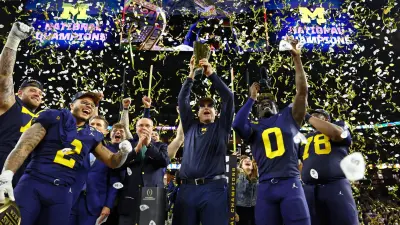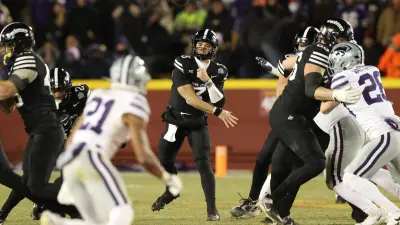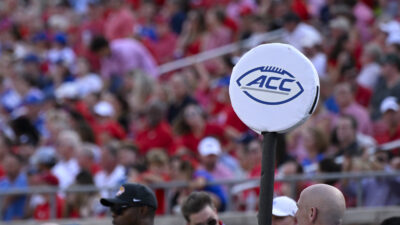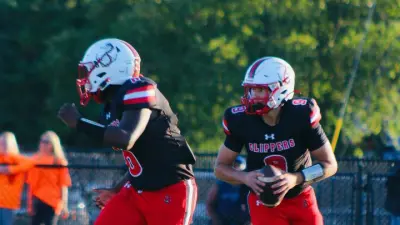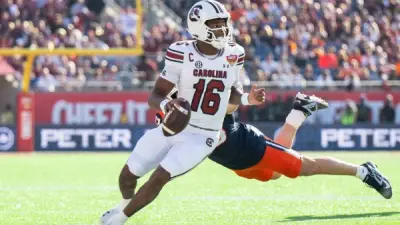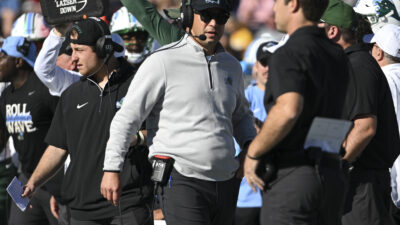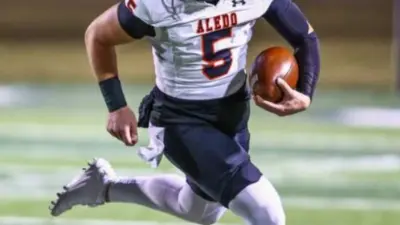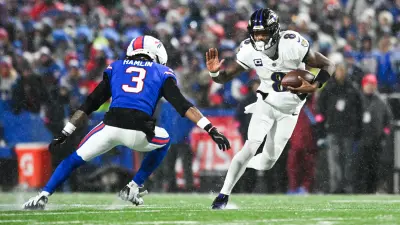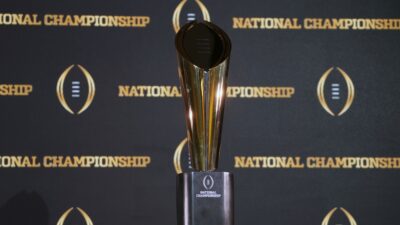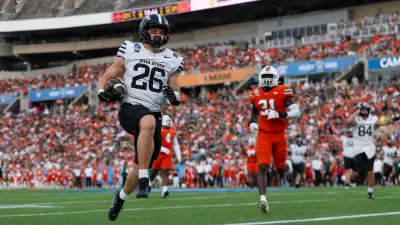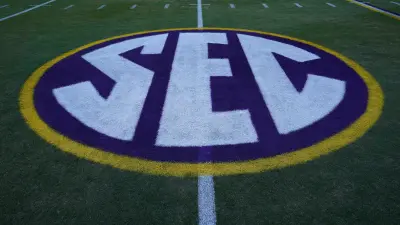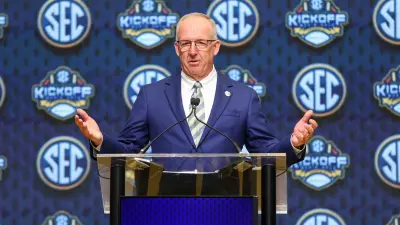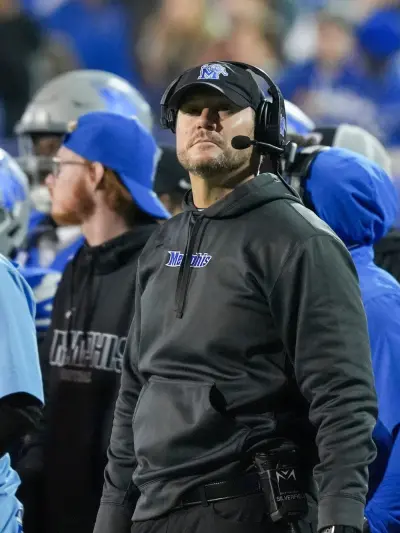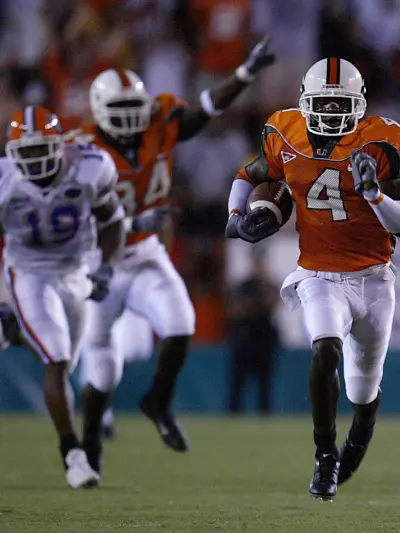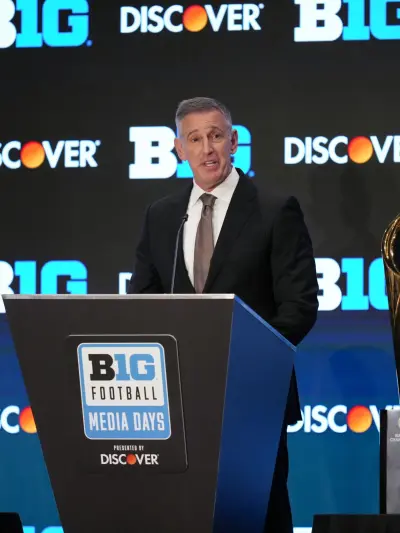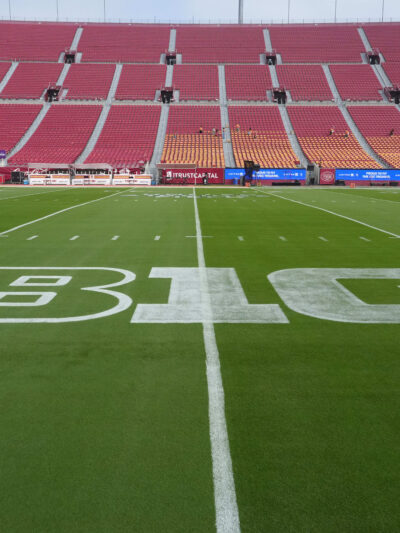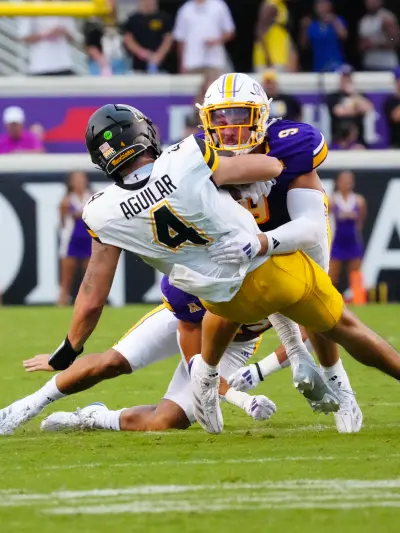By Kyle Golik
To kick off this article, I am going to pose a blasphemous question but there is an alarming trend that makes this a legitimate question.
The question is “When will the 2001 Miami Hurricanes become castigated like many great teams before them in all-time lists?” You might be triggered right now, you have every right to think I am an idiot, but a recent social media post on X by Double BB has seemingly swept social platforms. Some would say the 2001 Canes are no longer relevant.
In honor of President’s Day, here’s a look at the greatest teams in CFB History👀#GoBlue#RollTide#GeauxTigers #AllIn pic.twitter.com/xqQjzyOjYl
— Double BB🌟 (@BBsBigHouse1) February 19, 2024
Double BB cited an article from College Football News that had 2019 LSU at No. 1, 2018 Clemson at No. 3, 2023 Michigan at No. 5, and 2022 Georgia at No. 6 and dubbed those four teams “the Mount Rushmore of College Football.”
To develop their list of the greatest national champions, College Football News used 10 measurable metrics. Some are objective, like Wins, Losses, Point Differential, and Winning Percentage. Some were subjective like gauging quality wins and losses whether they were quality, elite, or bad.
More Sports News
College Football News Greatest National Champions Algorithm:
1. Wins. Obviously, winning matters. Just win lots of games, and all is fine. 1 point per win.
2. Losses. Don’t lose. -1 point per loss
3. Ties. Yeah, there used to be those. 0.5 points per tie.
4. Quality Wins. The wins over the good teams. 1 point per win over a team that finished with a winning record.
5. Elite Wins. The wins over the great teams. 1 point per home win over a team that finished with two losses, or a road, bowl, or neutral site win over a team that finished with three losses. An extra 0.5 added to a road win over a team that finished with two losses.
6. Bad Losses. The soul-crushers. -1 point per loss to a non-FBS/D-I team, or a team that finished with three wins or fewer. An extra 0.5 is added to a home loss to a “bad” team.
7. Bad Wins. The layups. -0.25 for a win over a team that finished with three wins or fewer.
8. Elite Losses. The forgivable defeats. 0.25 added for a loss to a team that finished with two losses of fewer.
9. Point Differential. They keep score for a reason. Points scored minus points against divided by 100.
10. Winning Percentage. A sort of tie-breaker, taking into account how good the season was beyond the raw wins and loss.
I do give College Football News credit for trying to keep it objective, but with College Football Playoff and conference championship games, recency bias slips in.
Consider College Football News’ No. 1 national champion, 2019 LSU. They had more quality wins (10) than either iconic Army teams of 1944 and 1945 coached by Earl “Red” Blaik which featured “Mr. Inside” Doc Blanchard and “Mr. Outside” Glenn Davis because they only played nine total games for those seasons.
In this same poll, College Football News rated the 2001 Miami Hurricanes at No. 37.
I want you to think about that one for a second. For most of us who saw the 2001 Miami Hurricanes, even myself, one of the harsher critics of those Miami teams would be hard-pressed to name 36 teams all-time better than that team.
But this isn’t a new phenomenon with college football.
Remember when ESPN was hyping up Southern California’s 2005 squad leading up to their Rose Bowl encounter with Texas and they pitted the 2005 Trojans against the 11 teams they felt were the greatest of all time.
The full slate of matchups included the following:
- 1995 Nebraska
- 2001 Miami
- 1994 Penn State
- 1979 Alabama
- 1991 Washington
- 1997 Michigan
- 1999 Florida State
- 2002 Ohio State
- 1988 Notre Dame
- 1955 Oklahoma
- 1969 Texas
There was definitely a taste of recency bias there.
Before that, some classic examples include the 1983 Nebraska Cornhuskers, who many thought were the greatest team of all time leading up to their encounter with Miami in the Orange Bowl. Similar hype was given to the 1969 Ohio State Buckeyes leading up to the Michigan game. There were legitimate opinions made not only were they the greatest college team of all time, but also they could compete against NFL teams.
I have always felt, and I am guilty of doing this as a writer as well, when writers or the media invoke the term “all-time” it is the original clickbait because you want to know who is No. 1 and who makes the list.
Arguments are had over rankings, but has anyone ever really found a way to do a legitimate all-time list with proper parameters? With how college football has constantly changed and shifted, it’s hard to compare a team like 1894 Yale, which finished as College Football News’ No. 2 team of all time to a modern team. What helped them was the volume they had, but that doesn’t work with other past teams. Only 2009 Alabama and 2013 Florida State made the Top 10 as the only other teams alongside 1894 Yale to have not been in the College Football Playoff era, which speaks volumes of how great they were.
Ultimately, I always felt it is up to the writer or media group who takes on the endeavor of doing a “greatest of all time” list, if that group has influence they have the biggest responsibility of being the caretaker to history.
Humans evolve, sport evolves, and I get we all get bigger, stronger, and faster. I get strategies and the game evolves but keep in mind Don Hutson, who was arguably the NFL’s most dangerous weapon in the 1930’s and 1940’s played at 6’1”, 185 pounds. Cooper Kupp, who won the NFL receiving Triple Crown in 2021 is 6’2”, 200 pounds. You can’t tell me if Hutson gets involved with the nutrition plans and weight training today, he would easily be 200 pounds.
I feel recency bias is done in all-time lists to help achieve clicks and page views and this isn’t new. We shouldn’t be surprised when we see all-time lists done and see manufactured controversy and making a debate with the most recent teams. Just don’t try to convince me there are 36 better teams than 2001 Miami.
